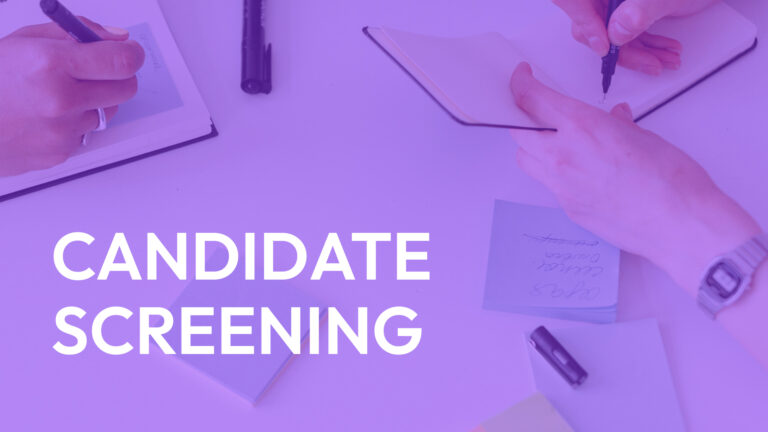Nowadays, artificial intelligence can easily help with CV screening both for job seekers and recruiters. However, for a recruiter, an initial CV review defines the development of the whole hiring process. Subconscious biases, tiredness, lack of time, pressure, and many other factors may influence whether the right candidate will be found.
Using AI recruiting technology seems the only correct choice that quickly helps mitigate the pressuring factors and make more thoughtful decisions. This is part II of efficient hiring, and today’s topic is the initial CV screening.
Challenges AI can help with
The information about recruits spending 8 seconds on average on an initial resume screening has been roaming around the internet for a long time. While the validity of this claim can be debated, one thing is clear: a non-biased, thorough analysis of every resume is close to impossible when done by one person. However, AI can be a great help and give a lot of unexpected insights during the CV analysis, like:
- Role-specific skill assessment
- Analysis of possible transferable skills
- Resume ranking
Talantly.ai CV Evaluation Report
An advanced AI recruiting solution called Talantly.ai can provide you with the above-mentioned insights and more. After completing all the preparation steps, like creating a vacancy and uploading a candidate’s CV, an evaluation report will be automatically generated. Its main purpose is to turn the resume into bite-sized pieces that are visually easier to read and are packed with insights. Let’s discuss how to read all of those effectively based on the example below:
Basically, artificial intelligence takes a specific skill, knowledge, or experience from the vacancy and analyzes a candidate’s CV and how it fits that skill. For example, an important part of the Content Manager role with a German audience is German language and cultural knowledge. Hence, the system defines a requirement “Knowledge: German C1” and gives it a strength score, defined by the recruiter on the previous stage. Then, Talantly.ai looks for corresponding skills in the resume. If it does find such a thing in a CV, it lets a recruiter know and creates a percentage of how much the skill in the resume meets the requirement. If the skill was marked as a must-have, there will be visual representations of the fit in the following form:
- ✅ – mandatory skill is present and met
- ⚠️ – mandatory skill is met, but has a low score
- ❌ – mandatory skill is not present in the CV
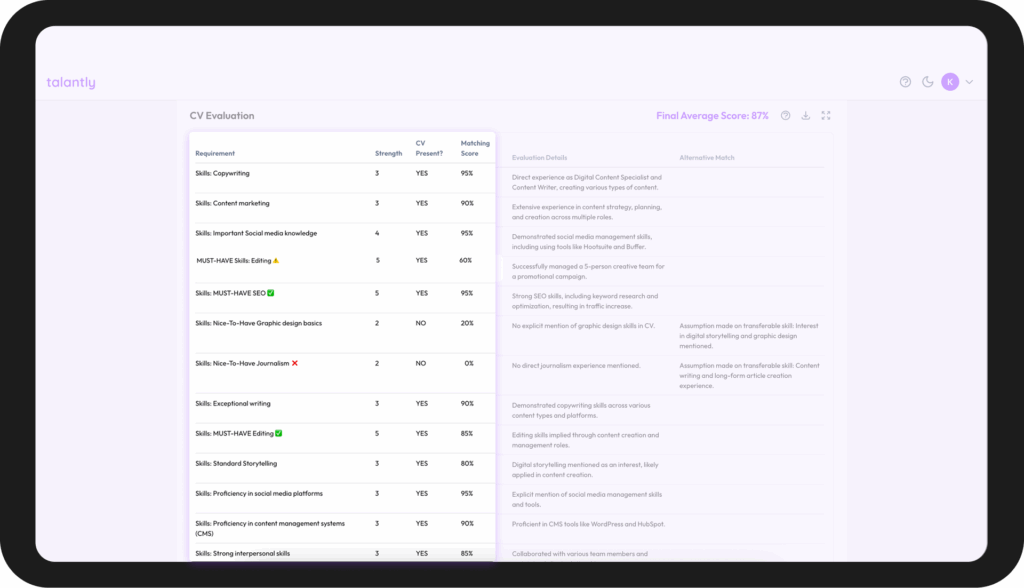
The next column is called “Evaluation Details”, and it’s where the magic happens. The system defines the relevance of the CV skill. There are 5 types of relevance:
- Direct relevance – shows the same skill that is required
- High relevance – the skill is mentioned, but it’s generalized (instead of Adobe InDesign the candidate had Adobe Suite)
- Moderate relevance – a skill similar to the one needed, or one where there is the same set of requirements, is mentioned
- Low relevance – this specific skill was not explicitly mentioned in the CV, however, there are others that can imply it
- No direct relevance – the skill was not mentioned in the CV, but there might be transferable skills
Additionally, this column gives a detailed description of the skill that was in the CV in case the candidate provided any specific details.
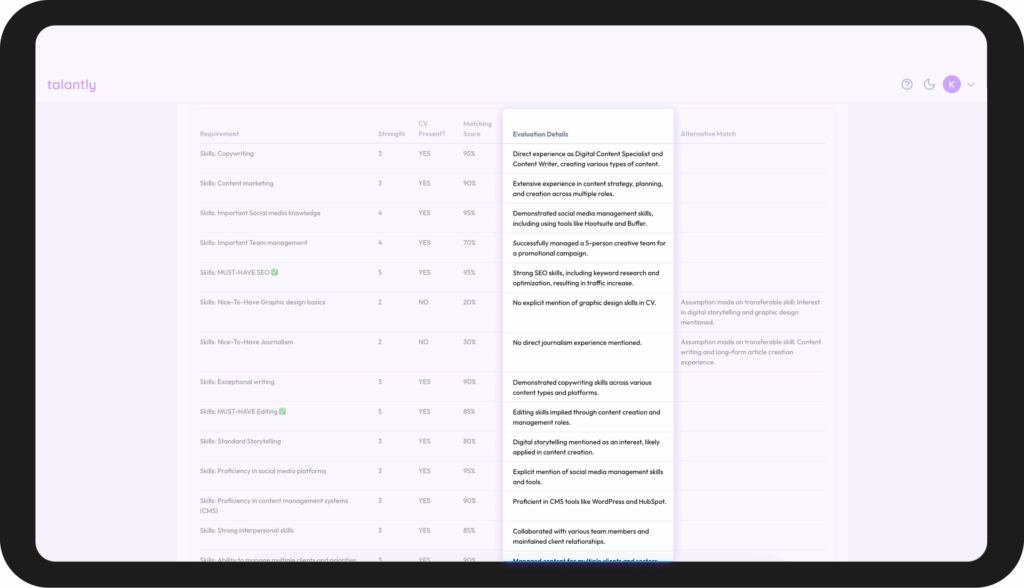
The last column is reserved for the skills that got “No direct relevance” or “Low relevance” in the evaluation. Column “Alternative Match” is used for making an assumption about transferable skills. No need to worry, when using AI’s extensive knowledge about the relations between different skills in all areas, it’s easier to find a candidate who can learn more easily based on their previous experience.
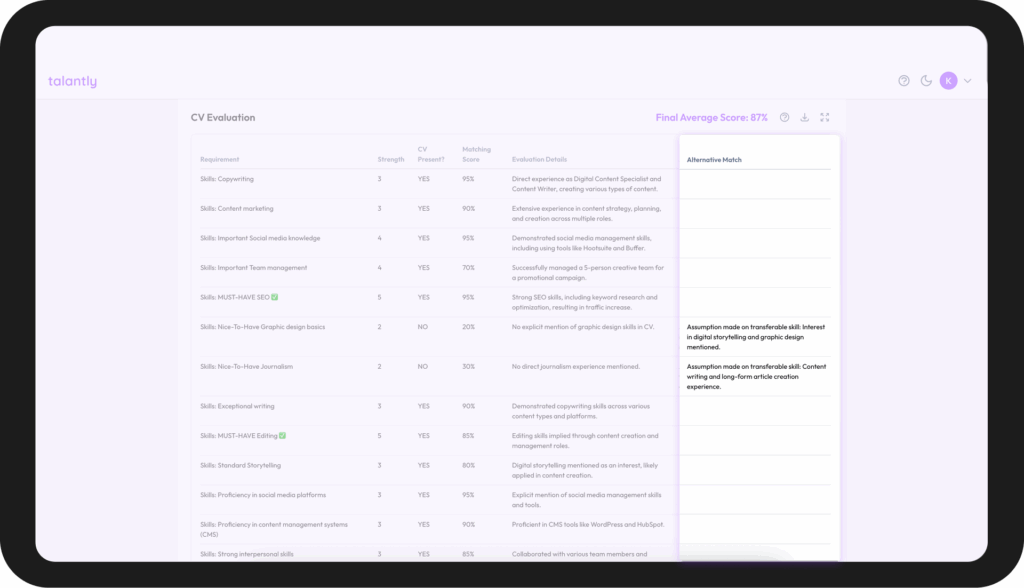
If the hiring manager decides to proceed with the rejection after analyzing the documents, the system can help with the argumentation. Talantly.ai provides a ready-to-use “Possible Rejection Motivation” written in a way that eliminates possible personal attacks and only focuses on the objective differences between the requirement and the resume.
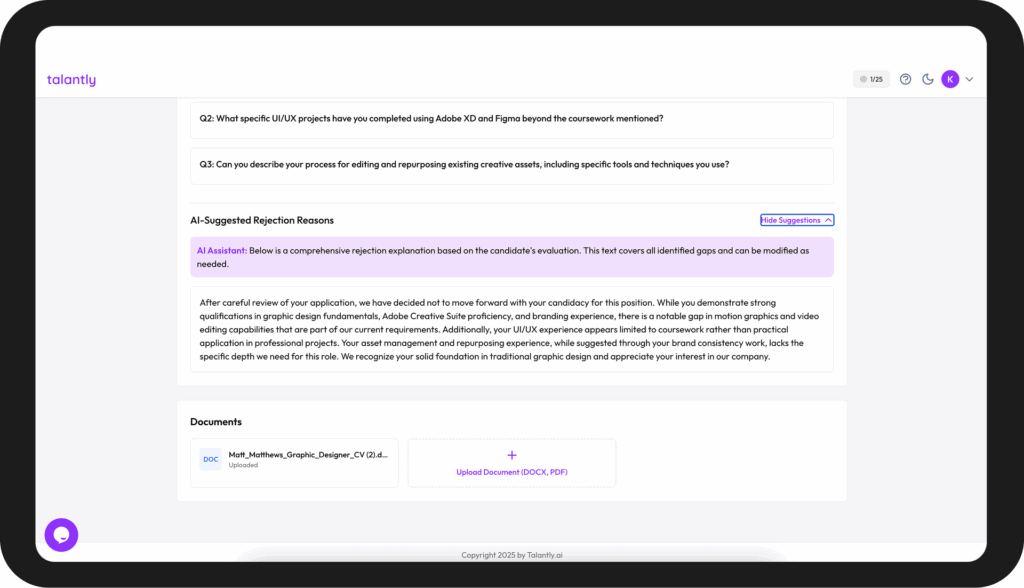
Additionally, Talantly.ai looks for the gaps between the vacancy and the CV and creates three questions to ask the candidate during the interview stage to fill those gaps and help make a decision.
In the end, the system gives the candidate an overall percentage score. It can help the recruiter understand if the candidate is worth proceeding with along the hiring process. All the scores are visible on the vacancy page to simplify the work. And if the candidate is not fit for the job, just delete the applicant and only store those who matter.

Final thoughts
At the end of the day, it is up to a recruiter whether to use AI for hiring. However, it is difficult to deny the good it can do when working with the recruiters, rather than either working independently. AI provides a thorough, unbiased, and useful analysis, and it’s up to the person to make the right decision, where everybody wins.

